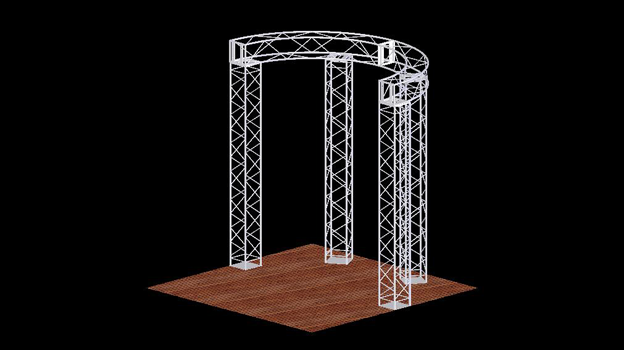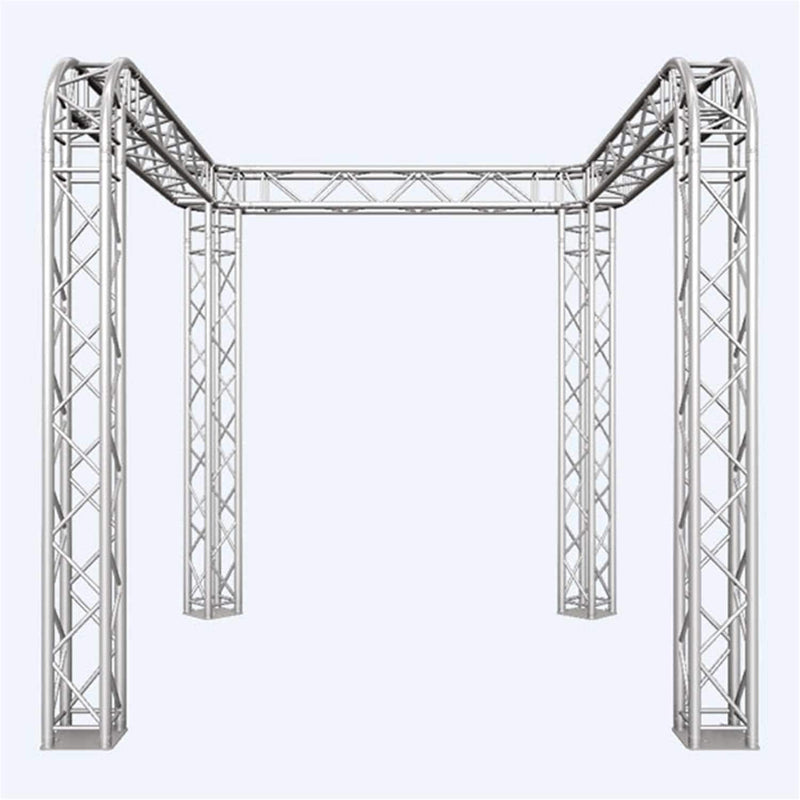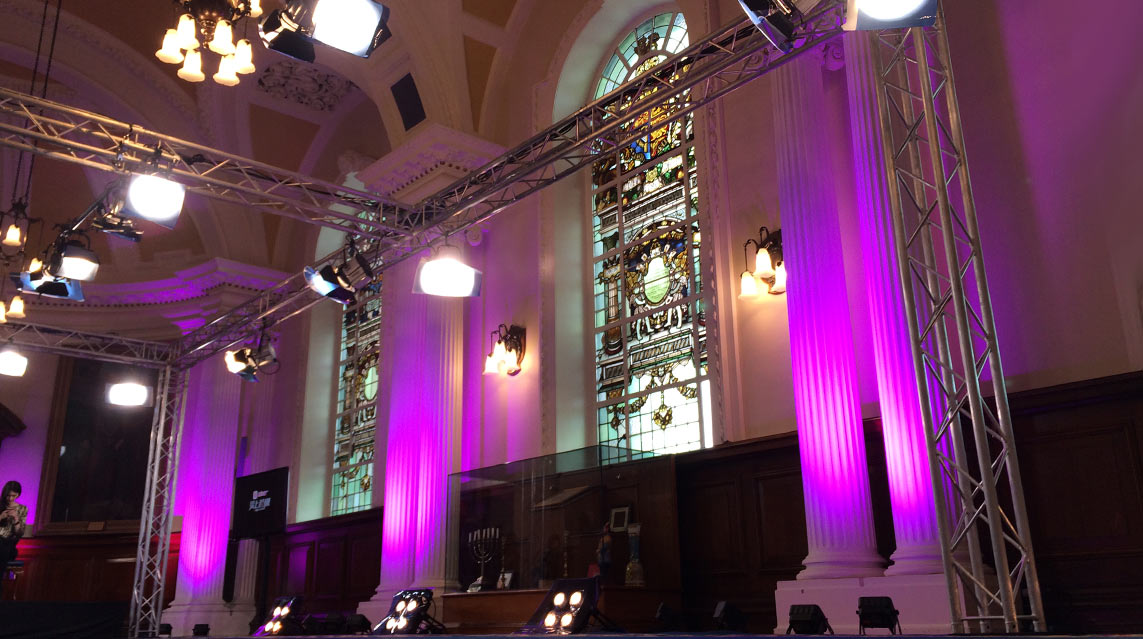

I'm signed up to take several training courses in stage rigging and electrics in the near future, and as much as I would love to take this job, I don't know if it's the best idea mainly because of the issues surround the safe rigging of truss. While I have a lot of theater experience, having to distribute my own power, hang my own truss, etc. I know very little about ground support truss in a "production" environment. I don't know anything about hanging truss.What special hardware do I need to attach the chain hoists to either the ceiling mounting points or the truss? What additional safety measures must be taken?.How many chain hoists do I need per truss span? One on each end? Spans range from 8' to 48'.How do I use chain hoists? Do they clip on to the mount point on the ceiling then attach to a mount point on the truss? Where does the extra chain go when the truss is fully raised?

The hotel staff will actually hang whatever I need from their mount points. I've been instructed to use chain hoists to raise/lower the truss once all the lighting is in place. The hotel provides ceiling mount points.At the end of the catwalk I'm going to have a single truss stick for front lighting. I'll also need between 4-5 sections (per side) for the catwalk as it's undecided whether the catwalk will be 32' or 40' long. For a 48' stage, I figure I'll need 6 sections (48') on both the front and back of the stage. I'm thinking about using 12" box truss sections each 8' long. Is Socapex the "best" choice of cable to use for wiring up several trusses of lights?.Is there anything ‘special' about these cables or do they pretty much act like a multi-conductor extension cable that requires either a special outlet or the use of break-in and break-out cables? With a power distribution system, I understand that I usually have the option to use Socapex cable to carry 6 circuits at one time. I'm most familiar with twist-lock plugs, Edison plugs, and stage pin plugs.Because I'm using (ceiling-hung) truss, do I need to run electrical up to the truss behind the stage, then from there across to other trusses? The truss segments aren't all connected. How are fixtures normally powered when they're hung on a truss? Ie/ in a theater, the electrical is more or less hidden from the public.I'm familiar with the basic power issues, such as circuit loads, cable gauges, etc. I'll be provided with camlock plugs for 3phase either 200 or 400amps. On the runway, if there are truss pieces run across either side of the 8' wide runway about 10'-15' above ground (stage) level, how many PARs should be used for a total length of 32'? (or how far apart should they be spaced?)įor the lighting, I'm going to need to provide my own power distribution.

How many should be positioned in the back of the stage facing forwards to eliminate shadows?.How many PARs (per color) should be used for a stage 48' wide?.I am thinking about using several sets of PARs to achieve the color changing effect. The stage and catwalk will be lit MOSTLY white, but the stage needs the ability to change colors. The intelligent lights will project gobos onto the pillars to enhance the atmosphere at different parts of the show. The color changers will light translucent "pillars" on stage, from the inside out. The questions I have are in different categories, but I've decided not to cross post, as I assume most people read different sections anyway.įor this particular show, I am going to need (for sure) 4 color changers and 4 intelligent lights, probably both HES fixtures. The budget is very limited (around $4000). This event is not in a theater, but a hotel ballroom. This particular show is on a stage 48'x24' with a 8'x32' catwalk coming out the center. I've got a pretty good background in theater lighting, and I've done several small fashion shows before.

Hello! I just signed up for the Blue Room but I'm a long time reader! I've got a couple questions I was hoping I could find answers to.īackground: I'm deciding whether or not to take a job providing lighting for a fashion show.


 0 kommentar(er)
0 kommentar(er)
